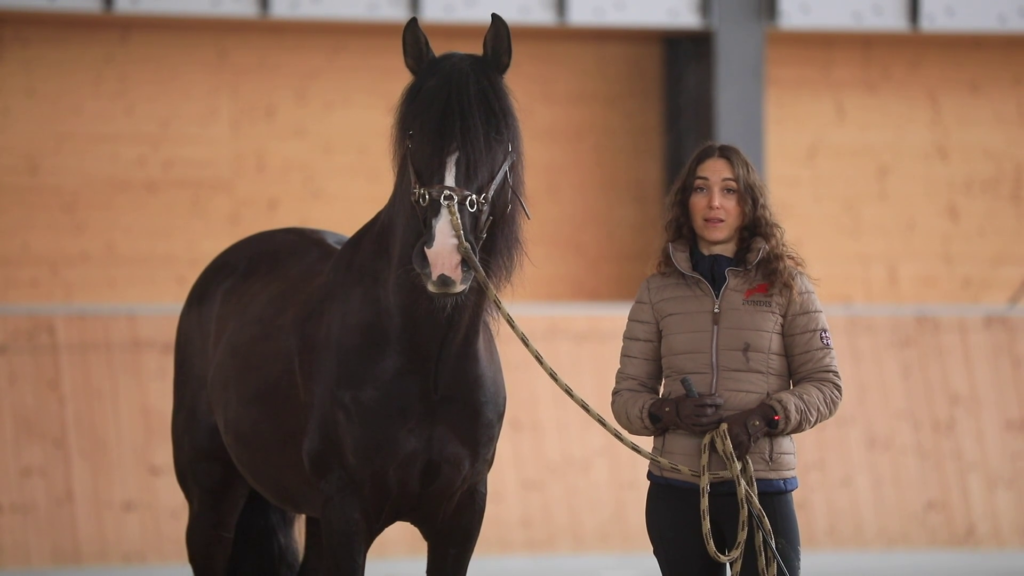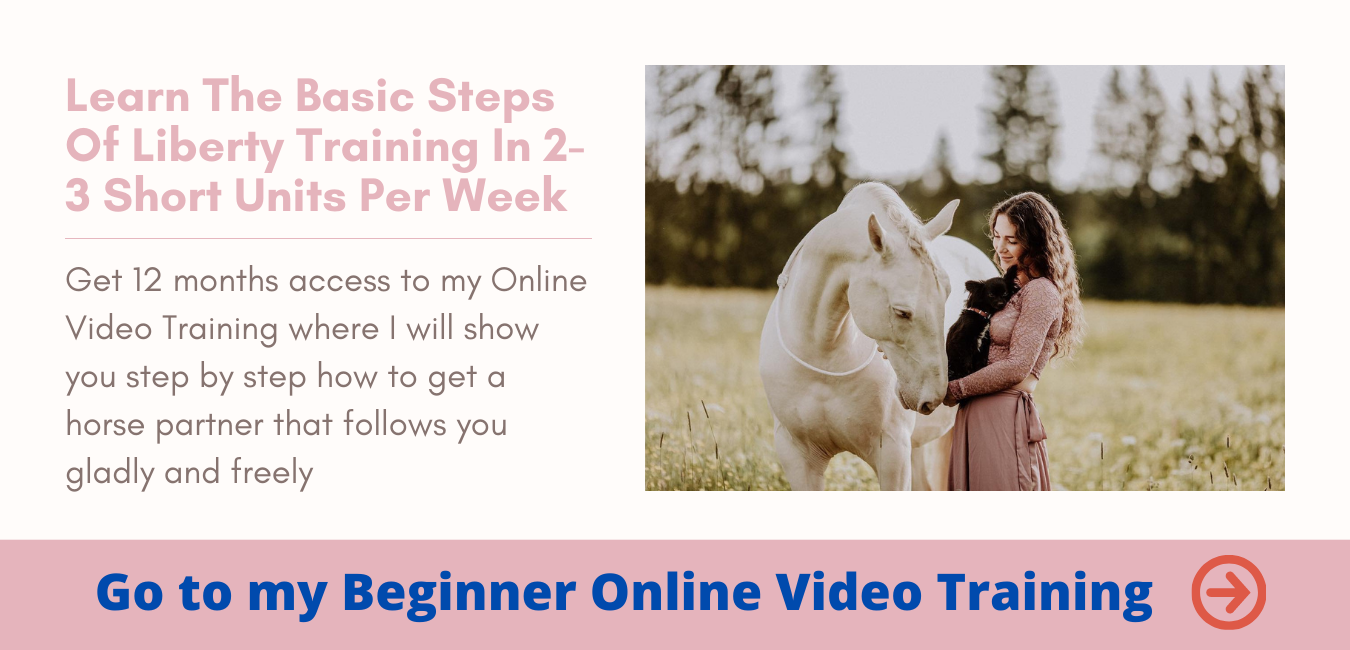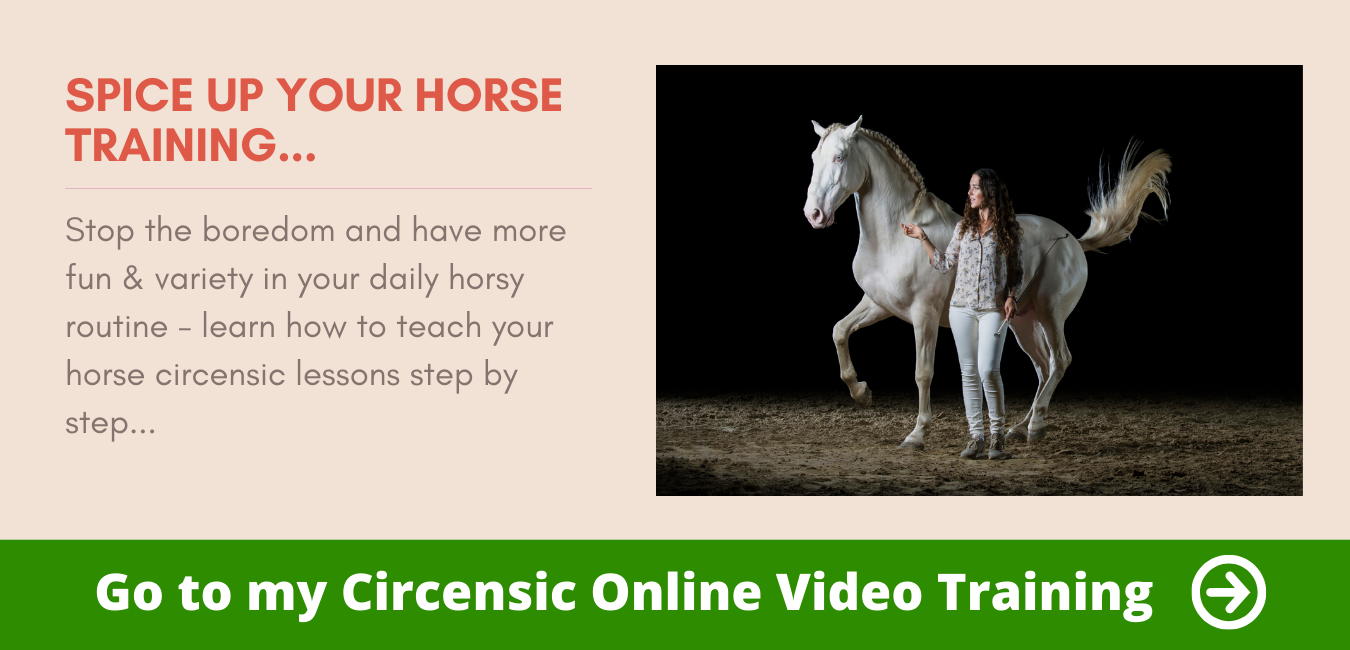In spring, sunny and rainy days alternate and it happens quickly that several riding arenas are under water. Maybe at your place too?
Not everyone has an indoor riding arena – even though I am overjoyed that we now always have a roof over our heads for our training at the Hacienda Buena Suerte – my home in Spain.
But even though I can usually train dry, there are situations in your horse’s convalescence, e.g. when he is recovering from an illness or when you want to slowly build up muscles, in which you can only train very leisurely. What I’m getting at is that this is also time that you can use!
Because no matter if the ground, your horse or other reasons slow you down: You don’t always have to work at a trot and canter.
And today I’ll explain how ? !
Together on the ground
Warming up is – and should be! – you should probably also warm up at a walk. This is extremely important to slowly bring tendons, muscles and ligaments up to temperature and to avoid injuries.
Many horse people either walk and pull their horse behind them or simply walk along on a long rein.
But you can use the first few minutes to brush up on the basics of the lead exercises with your horse.
Does he keep the “comfort position” at the same level as your shoulder when you walk faster and then slower? Does he stop when you stop or does he push you on? Does he follow you on curved lines or would he run away if you didn’t have him on the rope or reins?
It doesn’t matter whether your horse is an old hand at the business or just starting out:
Conscious leading with the help of very specific body language can ensure greater understanding and more harmony even in the first few minutes of warming up – because horses are masters at reading small gestures and they are just as important to them!
When it comes to building muscle or loosening up your horse, there is a lot you can do at the walk.
I recommend a (well-fitting!) cavesson as soon as it comes to stance and bend, because this way you can control your horse very finely. A knotted halter or a snaffle are not suitable unless you start working on the long reins, e.g. on the bit.
If you want to bend and position your horse, it doesn’t even need to move in the first step. This also works when the horse is standing – and standing itself is a great exercise that can be incredibly valuable if you practise it safely.
I then start to teach the horse to lower its head as soon as I give an impulse on the cavesson.
Here, as everywhere in horse training, less is more!
If your horse does not understand your impulse and tends to put his head up (remember: for horses it is much more logical to work AGAINST pressure than to give in), you can add a treat at the beginning to lure your horse down.
Your timing is important here, so that your horse connects the impulse on the cavesson with his correct reaction to lower his head.
If this works well, you can also begin to place and bend your horse on both sides while standing – and train your eye to see the difference.
Because the position only happens in the neck – and often we tend to ask “too much”. In any case, standing gives you the perfect opportunity to work very cleanly with your horse and to make sure that he doesn’t get tangled in the neck.
You can also check the bend in the stance. This gives you the chance to observe exactly when your horse’s hips move forward and how you manage that the bend really goes through the entire body of the horse.
You can also teach your horse to lift the “inside” shoulder so that he can later walk correctly on the circle or in a volte. Think of training in a standing position as “training in slow motion” where you have more time than ever before to train very precisely.
If this works well in the stand, you can move on to the walk.
Here you can incorporate every imaginable variation of lateral gaits.
These not only warm up your horse, they also stretch him. In addition, when done correctly, a hind foot always steps well under the centre of gravity, which teaches your horse to take the load on the hindquarters.
Speaking of weight on the hindquarters:
You can also teach your horse to shift his weight more and more to the hindquarters while he is still standing.
To do this, simply stand in front of or next to your horse and, if possible, only give the signal to move backwards with your body language or a gentle impulse on the cavesson or chest.
However, you reward before your horse takes a step. This requires some sensitivity at the beginning, as many horses are “too fast” and start walking straight away.
But this weight shift, which in the end almost looks like a “bob” and which your horse can hold longer and longer (similar to the mountain goat), is perfect to give your horse an idea of using his hindquarters more consciously.
[su_youtube url=”https://youtu.be/2LaLP-aHHTU”]
Even beyond such gymnastic exercises, you can practice an endless number of exercises with your horse!
Apart from the training of composure (with a flag, a tarp, etc.), you can have your horse step forward or sideways over poles, incorporate the classic pole L, work on the school halt, practise circus lessons such as the Spanish walk, giving kisses, shaking his head, knocking down pylons and putting them back up and much more!
It doesn’t matter what your ground looks like or if your horse needs to get fit again slowly:
Use the time to strengthen your base!
Experience shows that the longer and more thoroughly you work on the basis, the more it pays off in later work – no matter whether it’s riding or free dressage ? Have fun!
Have fun training with your horse!
All the best,
Your Kenzie




